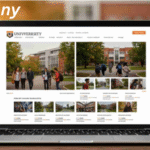Flexibility and accessibility have taken centre stage. The demand for remote desktop solutions has surged, enabling teams to work efficiently from various locations. However, in order to do so, a reliable remote desktop solution is a must. With the help of a reliable remote desktop solution, companies can maintain productivity and collaboration across dispersed teams. However, making the right choice can be overwhelming, with many options available.
Let’s explore how to identify the ideal remote desktop solution tailored to your team’s needs.
Know Your Team’s Needs
Before exploring various remote desktop solutions, it’s crucial to grasp your team’s specific needs. Each team operates differently, influenced by the industry, team size, and the nature of their tasks. For instance, technical teams require effective support capabilities such as screen sharing and remote troubleshooting. In contrast, sales teams may need seamless access to client databases and resources to facilitate real-time communication.
When considering alternatives for remote access, including an alternatwive to Anydesk could provide valuable insights into the specific functionalities you require.
Conducting a Needs Assessment
Conducting a thorough needs assessment can clarify your team’s requirements. Engage your team through surveys or interviews to gather insights about their current workflows, challenges, and technological capabilities. This collaborative approach uncovers the unique demands of your team and fosters a sense of ownership in the decision-making process.
Consider the scenarios in which your team will use the remote desktop solution. Will they need access to heavy applications or just basic file sharing? Understanding the context in which the solution will be used will guide you in identifying the most beneficial features.
Key Features to Prioritise
Several essential features can significantly enhance your team’s user experience and overall productivity when searching for a remote desktop solution. Here are some critical features to consider:
1. User-Friendliness
A user-friendly interface is vital for ensuring swift adoption by team members. The solution should allow users to connect with minimal setup and without extensive technical knowledge. An intuitive design will decrease the learning curve and improve overall efficiency as team members can quickly navigate the platform.
2. Security Measures
With the rise of cyber threats, security must be a top priority. Look for remote desktop solutions that provide robust security features, including:
- End-to-End Encryption: This ensures that all data transmitted between devices remains secure and protected from interception.
- Multi-Factor Authentication: By requiring users to verify their identity through multiple methods, you can add a layer of security to your remote access processes.
- Regular Updates: Frequent updates ensure that any vulnerabilities are quickly addressed, keeping your system secure against growing threats.
Ensuring that your remote desktop solution complies with industry standards for data protection will help safeguard sensitive information and maintain the trust of clients and stakeholders.
3. Performance and Reliability
The performance of a remote desktop solution is critical for maintaining productivity. Look for solutions that guarantee high performance, with minimal latency and downtime, even when multiple users access the system simultaneously. A reliable solution should provide smooth operation for all team members, allowing them to work efficiently without interruptions.
4. Cross-Platform Compatibility
Given the diverse array of devices that team members may use, your chosen solution must support multiple operating systems and devices. This compatibility ensures that whether your team members are on Windows, Mac, or mobile devices, they can access necessary resources without compatibility issues. Ensuring a broad compatibility range facilitates seamless workflows and enhances collaboration.
5. Support and Maintenance
Quality customer support can drastically reduce downtime and restore functionality quickly. Look for a solution that provides comprehensive support options, including:
- Documentation and Tutorials: Well-documented resources can help users troubleshoot common issues independently.
- Responsive Technical Support: Access to prompt assistance during technical difficulties is crucial, especially if your team relies heavily on remote access for daily operations.
Evaluating the level of support provided will help you gauge the long-term viability of the solution in your operational context.
Assessing Budget and Licensing Options
Cost considerations play a significant role in selecting a remote desktop solution. Understanding your budget will help narrow options and ensure you choose a solution that balances effectiveness and affordability.
Evaluating Cost Structures
Examine various licensing models offered by different solutions. Some providers may charge a one-time fee, while others may operate on a subscription basis. When assessing costs, consider the total cost of ownership, which includes:
- Initial Setup Costs: These costs encompass software acquisition, installation, and configuration.
- Ongoing Subscription Fees: For solutions that require monthly or annual payments, be sure to account for these recurring costs in your budget.
- Additional Expenses: Consider potential maintenance, upgrades, and user training costs.
Understanding the full financial commitment will assist you in making informed decisions. It is advisable to explore whether discounts are available for small to mid-sized businesses, as many providers offer tailored pricing options to accommodate varying budgets.
Taking Advantage of Free Trials
To ensure you’re making a wise investment, taking advantage of free trials or demos can be beneficial. Testing the software lets your team experience the usability, performance, and features firsthand. This hands-on experience will help you assess whether the solution meets the unique needs of your team before committing financially.
Integrating with Existing Systems
An often-overlooked aspect of selecting a remote desktop solution is how well it integrates with your existing technology ecosystem. Teams typically rely on a range of software tools for productivity and communication. A solution that seamlessly integrates with applications you already use—such as project management tools, communication platforms, or cloud storage solutions—can enhance workflow efficiency.
When evaluating potential solutions, ask yourself:
- Will the solution work with our current workflow?
- Can it sync data and applications efficiently across platforms?
- Does it offer APIs or customisable integration options if necessary?
The ability to create a cohesive technology environment can significantly impact overall productivity. By streamlining processes, teams can focus on their core tasks rather than navigating between disparate systems.
Scalability for Future Growth
As your business grows, so too will your team’s needs. It’s essential to choose a remote desktop solution that can scale with your organisation. Look for options that can easily accommodate increased users or additional features as your operations expand.
When assessing scalability, consider factors such as:
- User Capacity: Does the solution allow for an easy upgrade in the number of licenses?
- Feature Upgrades: Are additional features available for purchase or as part of higher-tier plans?
- Customisation Options: Can the solution be tailored to meet requirements without a complete overhaul?
Choosing a scalable solution will ensure that as your team grows, your remote desktop capabilities will remain robust and effective.
Evaluating User Feedback and Reviews
Before making a final decision, evaluating user feedback and reviews is prudent. Understanding how other businesses have experienced the solution can provide valuable insights into its performance, reliability, and support.
Look for reviews that focus on key aspects, such as:
- User Experience: What are users saying about the ease of use and interface design?
- Technical Support: How responsive is the support team when addressing issues?
- Real-World Performance: Are there any recurring issues related to performance or downtime?
Seeking out independent reviews and case studies can further illuminate the strengths and weaknesses of each option, helping you make a more informed choice.
Considering these factors, you can confidently select a remote desktop solution that meets your team’s needs. This thoughtful approach will enhance productivity and foster a collaborative environment that can adjust to the changing demands of your business.







